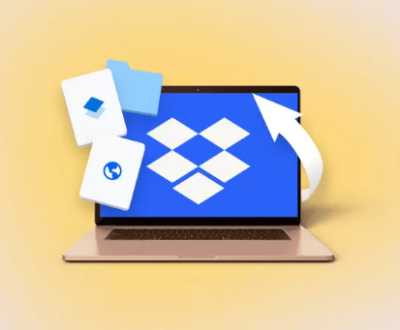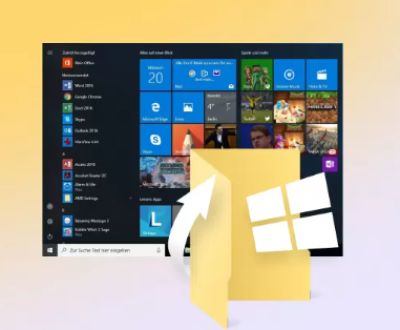Formatting a disk is one of the most common ways to prepare a storage device for use. Whether it’s a hard drive, SSD, USB flash drive, or even an SD card, formatting is often performed to clean the device, fix file system errors, or prepare it for a fresh operating system installation. While many people assume that formatting erases everything on a disk, the reality is a bit more nuanced.
1. What is Formatting?
Formatting is the process of preparing a storage device by creating a new file system. This file system determines how data is stored and retrieved on the disk. The process involves organizing the disk’s storage space into clusters or blocks that can be read by the operating system. Formatting typically involves two main steps: creating a new file system and optionally deleting existing data.

There are two types of formatting:
Quick Format: This is a faster type of format that removes file system metadata but does not overwrite the actual data stored on the disk. A quick format is useful when you’re preparing a disk for reuse but doesn’t fully erase the data.
Full Format: A full format not only removes the file system metadata but also scans the disk for bad sectors and attempts to overwrite the existing data. Depending on the disk size and the method used, a full format may take longer but provides a more thorough clean-up.
2. Does Formatting Really Erase Everything?
When people ask whether formatting a disk erases everything, they are typically asking whether the data on the disk is permanently deleted. The answer depends on the type of formatting and the nature of the data.
Quick Format:
A quick format does not erase the data on the disk, at least not in the way you might expect. In a quick format, the operating system deletes the file system metadata, such as the file allocation table (FAT) or master file table (MFT). This metadata contains information about the location of files on the disk. After a quick format, the data is still present on the disk, but it is marked as deleted. The operating system simply forgets where the files are located, making it difficult for users to access them.
However, until the space occupied by the “deleted” files is overwritten with new data, it is theoretically possible to recover the deleted files using data recovery tools. This means that if you format a disk quickly and then immediately overwrite it with new data, the chances of recovering the original files are reduced, but they may still be recoverable with the right tools.
Full Format:
A full format is more thorough but does not necessarily erase everything permanently. In addition to removing the file system metadata, a full format attempts to scan the disk for errors and marks bad sectors. Some full formats (particularly in older operating systems like Windows XP) do not actually overwrite the data sectors; they only mark the sectors as available for reuse. However, in modern operating systems like Windows 10 and 11. a full format usually includes overwriting the disk’s data with zeros or random characters, making data recovery much more difficult.
While a full format is more effective at wiping data than a quick format, it still doesn’t guarantee 100% data destruction. Specialized data recovery tools can sometimes recover partially overwritten or “scrubbed” data, depending on the method of formatting and the specific type of disk used.
3. Types of Data and Their Recovery Post-Formatting
Understanding the nature of the data on a disk is essential for understanding how well it might survive a format. Different types of data may behave differently when it comes to recovery.
File Data:
When a file is deleted, it is not immediately erased from the disk. Instead, the operating system simply marks the area where the file was stored as available for future use. In the case of a quick format, the file allocation table or master file table is reset, and the data becomes “orphaned,” meaning the operating system no longer knows where to find it. In the case of a full format, some of the sectors where the file was located might be overwritten, making recovery harder, but not impossible.
System Data:
System data, including operating system files, boot records, and system configurations, may not be fully erased after formatting. These files are often critical for booting and running the operating system, and in the case of a full format, certain system partitions may remain intact or partially recoverable.
Hidden Data:
Data that is stored in hidden partitions or protected by encryption may not be fully wiped during formatting. Full disk encryption, such as BitLocker in Windows or FileVault on macOS, provides an extra layer of protection. If the disk is encrypted, even after a format, it may be difficult or impossible to recover any useful data without the encryption key.
4. Can Data Be Recovered After Formatting?
As we discussed earlier, formatting does not necessarily erase data permanently. If you’ve accidentally formatted a disk and need to recover lost files, there is a chance you can retrieve them, especially if you act quickly and do not overwrite the data.
Data Recovery Tools:
Panda Assistant is a versatile data recovery tool designed to help users recover lost or deleted files from various storage devices. Whether you’re dealing with a corrupted hard drive, a formatted USB drive, or an accidental deletion of important documents, Panda Assistant provides a user-friendly interface to guide you through the recovery process. It supports a wide range of file types, including documents, photos, videos, and system files, ensuring that you can retrieve almost anything that’s been erased or lost due to unforeseen circumstances.
The software’s core features include deep scanning capabilities that can detect files that have been deleted or lost due to formatting, system crashes, or corruption. Panda Assistant also includes tools for recovering data from external devices like memory cards, SD cards, and external hard drives. The software uses sophisticated algorithms to maximize the chances of successful recovery, even from damaged or partially corrupted storage devices.
One of the standout features of Panda Assistant is its ability to preview files before recovery, allowing users to selectively recover specific items instead of restoring the entire disk. This helps to save time and ensures that users only recover the files they need. The program is compatible with both Windows and macOS, making it accessible for users across different platforms.
5. How to Securely Erase Data
If you need to securely erase data from a disk, formatting alone will not be sufficient. There are other methods and tools designed to ensure that data is beyond recovery:
Data Wiping Software:
DBAN (Darik’s Boot and Nuke): A popular free tool for securely wiping hard drives. It uses various algorithms to overwrite data multiple times, making it nearly impossible to recover.
CCleaner: While often used for cleaning junk files, CCleaner also includes a drive-wiping tool that securely erases free space or entire disks.
Blancco: A commercial data destruction solution designed for compliance with regulations like GDPR and HIPAA, offering high levels of security for businesses.
Physical Destruction:
For the most secure data erasure, physical destruction of the disk is the ultimate solution. Methods like shredding, crushing, or drilling into the disk can physically destroy the data platters or components, making recovery impossible.
To sum up, formatting a disk does not necessarily erase everything. The type of format you perform (quick or full) and the state of the disk after formatting will affect how easily data can be recovered. A quick format simply deletes the file system metadata and marks the space as available, while a full format may involve overwriting data with zeros, making recovery more difficult but not entirely impossible.
About us and this blog
Panda Assistant is built on the latest data recovery algorithms, ensuring that no file is too damaged, too lost, or too corrupted to be recovered.
Request a free quote
We believe that data recovery shouldn’t be a daunting task. That’s why we’ve designed Panda Assistant to be as easy to use as it is powerful. With a few clicks, you can initiate a scan, preview recoverable files, and restore your data all within a matter of minutes.
Subscribe to our newsletter!
More from our blog
See all postsRecent Posts
- How to recover accidentally deleted files 2025-07-01
- How do i recover a file i accidentally deleted 2025-07-01
- How to recover an accidentally deleted file 2025-07-01

 Try lt Free
Try lt Free Recovery success rate of up to
Recovery success rate of up to









